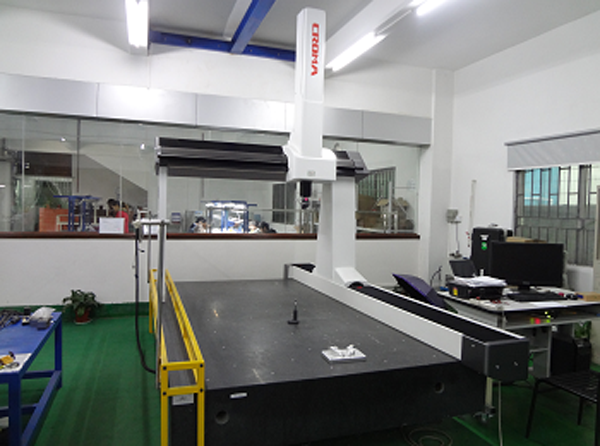1. Application of calipers
The caliper can measure the inner diameter, outer diameter, length, width, thickness, step difference, height, and depth of the object; the caliper is the most commonly used and most convenient and frequently used measuring tool at the processing site.
Digital Caliper: Resolution 0.01mm, used for size measurement with small tolerance (high accuracy).

Table card: resolution 0.02mm, used for conventional size measurement.

Vernier caliper: 0.02mm resolution, used for roughing measurement.

Before using the caliper, remove the dust and dirt with clean white paper (use the outer surface of the caliper to catch the white paper and then pull it out naturally; repeat 2-3 times)
When measuring with a caliper, the measuring surface of the caliper should be as parallel or perpendicular to the measuring surface of the measured object as possible;
When using depth measurement, if the measured object has an R angle, it is necessary to avoid the R angle but close to the R angle, and the depth ruler should be as vertical as possible to the measured height;
When the caliper measures the cylinder, it needs to be rotated, and the maximum value is measured in sections: CNC machining part.
Due to the high frequency of using calipers, the maintenance work needs to be the best. After each day of use, it needs to be wiped clean and placed in the box. Before use, a block is required to check the caliper's accuracy.
2. Application of micrometer

Before using the micrometer, remove the dust and dirt with a clean white paper (use the micrometer to measure the contact surface and the screw surface and the white paper is stuck and then pull it out naturally, repeat 2-3 times), then twist the knob to measure the contact When the surface is in quick contact with the screw surface, fine adjustment is used, and when the two surfaces are entirely in contact, zero adjustment can be performed to measure. machined part
When measuring the hardware with a micrometer, move the knob, and when it comes into contact with the workpiece, use the fine-tuning knob to screw in. Stop and read the data from the display or scale when you hear three clicks.
When measuring plastic products, the measurement contact surface and the screw lightly touch the product.
When measuring the diameter of shafts with a micrometer, measure at least two directions and measure the micrometer in the maximum measurement in sections. The two contact surfaces should always be kept clean to reduce measurement errors.
3. Application of height ruler
The height gauge is mainly used to measure the height, depth, flatness, verticality, concentricity, coaxiality, surface vibration, tooth vibration, depth, and height. When measuring, first check the probe and the connection parts for looseness.

4. Precision measuring instrument: secondary element
The second element is a non-contact measuring instrument with high performance and precision. The sensing element of the measuring instrument is not in direct contact with the surface of the measured part, so there is no mechanical measuring force; the second element transmits the captured image through the data line to the data acquisition card of the computer through the projection method. Imaged on the computer monitor by the software: various geometric elements (points, lines, circles, arcs, ellipses, rectangles), distances, angles, intersections, geometric tolerances (roundness, straightness, parallelism, vertical) Degree, inclination, position, concentricity, symmetry), and CAD output for outline 2D drawing. The workpiece contour can be observed, and the opaque workpiece's surface shape can be measured. CNC

5. Precision measuring instruments: three-dimensional
The characteristics of the three-dimensional element are high precision (up to μm level), universality (can replace a variety of length measuring instruments), can be used to measure geometric aspects (in addition to the elements that the second element can measure, it can also measure cylinders and cones), Shape and position tolerance (in addition to the shape and position tolerance that can be measured by the second element, including cylindricity, flatness, line profile, surface profile, coaxial, complex surface, as long as the three-dimensional probe Where it can be touched, its geometric size, mutual position, the surface profile can be measured; and data processing is completed using a computer; with its high precision, high flexibility, and excellent digital capabilities, it has become an essential part of modern mold processing and manufacturing and quality assurance Means, practical tools.

We are a reliable supplier and professional in CNC service. If you need our assistance, please get in touch with me at info@anebon.com.
Anebon Metal Products Limited can provide CNC machining, die casting, sheet metal machining services, please feel free to contact us.
Tel: +86-769-89802722 Email: info@anebon.com Website : www.anebon.com
Post time: Apr-13-2020
